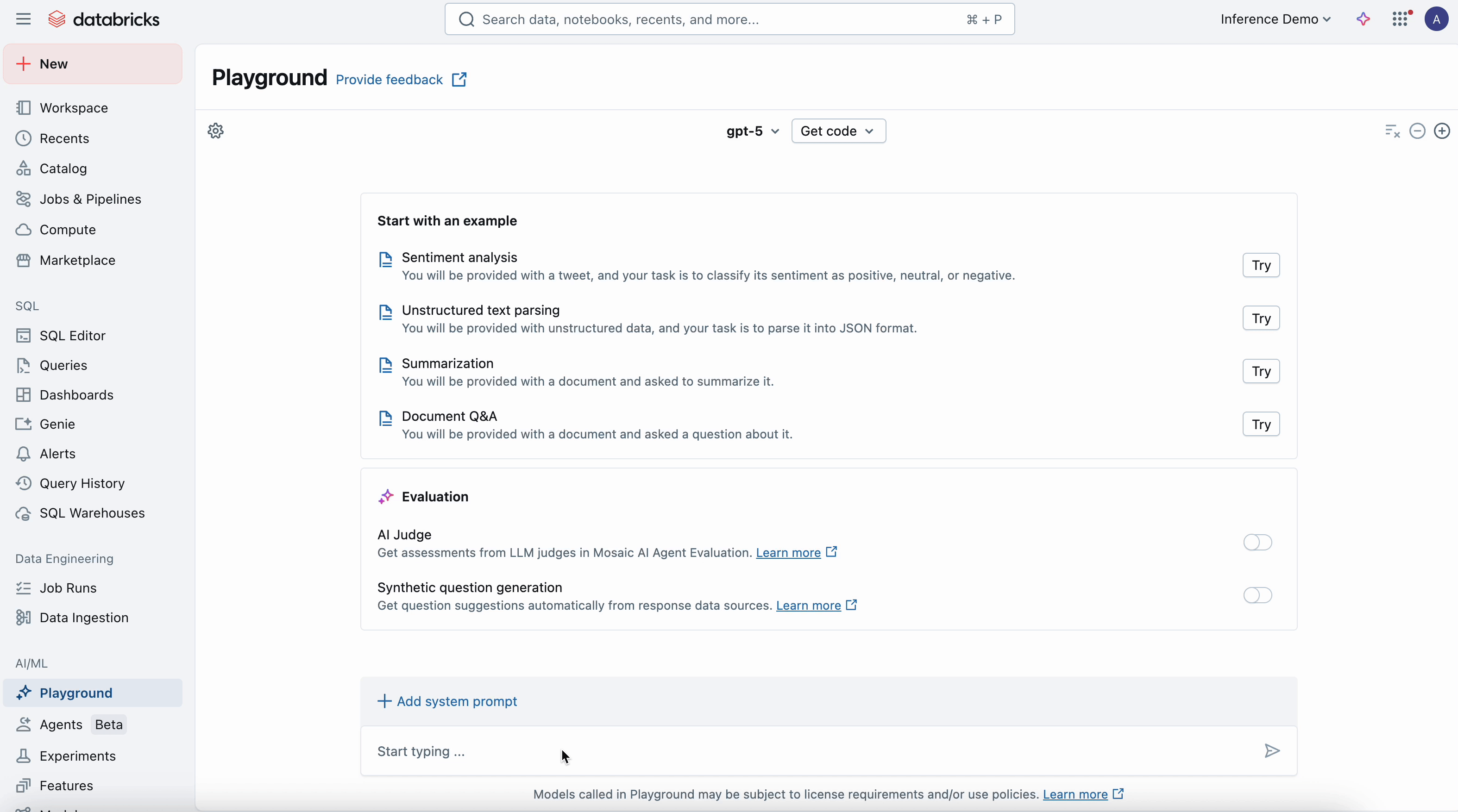You can now leverage the power of OpenAI’s most advanced models, such as GPT-5, right where your organizational data resides. Databricks has announced that OpenAI models are now generally available on its Data Intelligence Platform. This integration redefines how teams can build, deploy, and manage AI solutions at scale, all while maintaining security and compliance.
By embedding OpenAI’s language models directly within the Databricks environment, enterprises can now generate insights and automate workflows using real-time business data. There’s no need to move sensitive information or sacrifice governance. Teams are already using these capabilities to automate ticket analysis, summarize lengthy documents, and create conversational agents that answer questions grounded in live Delta data.
Key Capabilities Driving AI Transformation
- AI Playground for Exploration: The AI Playground offers a hands-on interface where users can try out different OpenAI models including GPT-5, GPT-mini, and GPT-nano - just adjust settings, and export effective prompts for notebooks and SQL queries.
- Built-in SQL and Python Operators: OpenAI models function as native operators, streamlining tasks like analyzing contracts, PDFs, transcripts, and images. The system automatically scales to handle everything from a handful of records to millions, ensuring reliable performance.
- Automated Document Intelligence: Lakeflow Declarative Pipelines allow organizations to design GenAI ETL workflows that ingest data from sources like Salesforce, apply AI-driven transformations, and maintain governance throughout the process.
- Agent Bricks for AI Agents: Agent Bricks lets teams create intelligent agents that connect to enterprise databases, vector stores, and external systems. It automates prompt engineering and model selection, delivering ongoing performance improvements and streamlined deployment.
- Unified Governance via AI Gateway: The AI Gateway acts as the enterprise control plane, ensuring that all OpenAI model traffic is governed, logged, and auditable. Integration with Unity Catalog provides visibility, usage tracking, and enforcement of security and rate limitations.
Ready for Production: Secure and Scalable AI Workflows
This milestone signals that OpenAI models on Databricks are ready for enterprise production. Organizations have the tools to build robust AI-powered solutions (such as data enrichment pipelines, automated document processing, and advanced conversational agents) with confidence in their reliability, scalability, and security.
How to Get Started and What’s Ahead
Databricks invites users to explore GPT-5 and related models in the AI Playground. For deeper integration, comprehensive documentation is accessible via the Foundation Model API.
Additionally, the upcoming event “The Future of AI: Build Agents that Work” will showcase practical enterprise AI applications and what’s on the horizon for AI agents.
Takeaway
The general availability of OpenAI models natively on Databricks is a transformative step for operationalizing generative AI. By bringing advanced intelligence directly to governed enterprise data, Databricks enables faster innovation, greater automation, and full control over AI-driven initiatives.
Source: Databricks Blog


Databricks Unveils General Availability of Native OpenAI Models for Enterprises